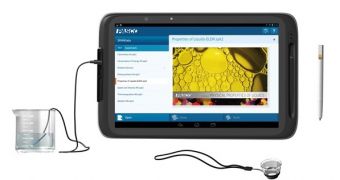The pen-wars are getting more and more intense. If last week brought the return of the Dell Active Stylus into the land of the living, this week we are witness to a new pen arrive on the market. So Wacom better watch out.
The new stylus is called the N-Trig DuoSense and will become available as a companion to Intel’s new rugged educational tablet, which was announced back in late January.
Providing a smart stylus companion to go with touch-enabled devices will allow students and teachers alike to use the device more intuitively, just like they would be handling old-school notebooks.
Director of technology Robert J. Baker pointed this out by saying that “Writing, sketching, annotating, illustrating, highlighting and showing process are essential parts of the teaching and learning process.”
“And when you want to take advantage of the power of a stylus, it is essential that you have an active digitizer solution like N-trig’s.”
“Most people are not aware of the exponential difference in performance between active pens and a capacitive stylus, like you get with an iPad or other capacitive touch devices. Drawing or writing with what amounts to a finger on a stick is far too constraining to be useful.”
N-trig is said to sustain the overall enhancement of the educational experience in a wide range of school-related subjects, such as language arts, mathematics (students will be able to input special characters), art and music composition.
Anyway, for those who have forgotten, Intel’s educational tablet is supposed to come with a 10-inch screen (1280 x 800 pixel resolution) protected by bumpers to prevent it from getting accidentally damaged. The power button has been tweaked a little too so it doesn't give in to accidental pushes.
Under the hood, there’s an Atom Z2320 processor clocked at 1.2GHz that handles Intel Hyper-Threading Technology. The Graphics Media Accelerator engine with graphics core allows the tablet to display smooth 3D visuals without issue.
Last but not least, educators can connect magnifications lenses or plug-in thermal probes to the tablet, in order to raise the levels of curiosity in students during experiments.

 14 DAY TRIAL //
14 DAY TRIAL //